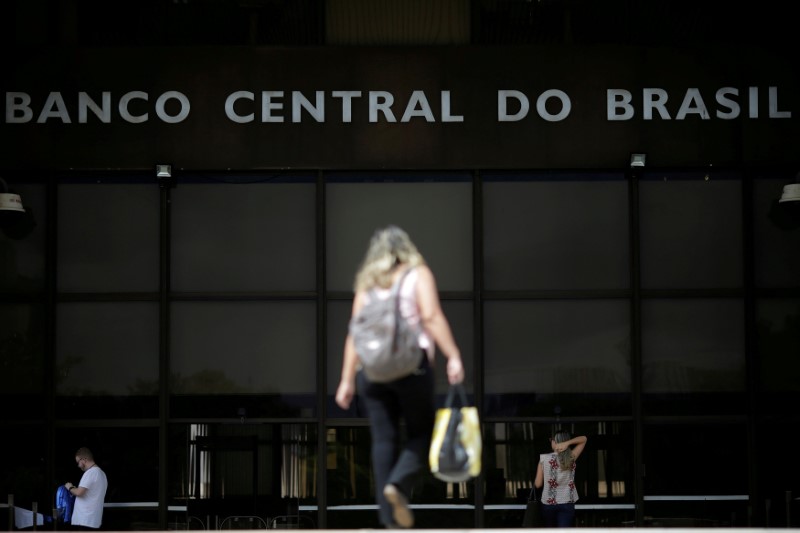 © Reuters. FILE PHOTO – The central bank headquarters building is seen in Brasilia
© Reuters. FILE PHOTO – The central bank headquarters building is seen in BrasiliaBy Silvio Cascione
BRASILIA (Reuters) – Brazil’s central bank is set to slow the pace of interest rate cuts on Wednesday, taking its benchmark rate just above an all-time low as the economy finally starts to emerge from recession.
All but one of 54 economists polled by Reuters last week expected the bank, following its two-day monetary policy meeting, to cut its Selic rate by 75 basis points to 7.50 percent after four consecutive 100-basis-point cuts.
The announcement will be made at 1820 local time (2020 GMT).
The pace of reductions, along with what some expect to be a hawkish post-meeting statement, should signal the imminent end of an aggressive easing cycle that has brought the Selic rate down from 14.25 percent just a year ago.
“We expect the statement to indicate in a strong way that the rate-cutting cycle is set to end before year-end,” wrote Cristiano Oliveira, chief economist at Banco Fibra.
Most economists expect a final 50-basis-point cut in December to 7.00 percent, below a record low of 7.25 percent, although a sizeable minority think rates could go as low as 6.50 percent in coming months.
Brazil’s economy has resumed growth this year after two years of deep recession in 2015 and 2016 that left a huge idle capacity. Inflation has plunged from double-digits to less than 3 percent, far below the official target of 4.5 percent.
The large output gap has left plenty of room for the economy to grow without fanning price rises. The growth rate may surpass 2 percent next year. However, economists such as Santander’s Rodolfo Margato do not expect the economy to face rising inflation pressures until late 2019 even as interest rates remain at stimulative levels, he wrote in a report.
Fusion Media or anyone involved with Fusion Media will not accept any liability for loss or damage as a result of reliance on the information including data, quotes, charts and buy/sell signals contained within this website. Please be fully informed regarding the risks and costs associated with trading the financial markets, it is one of the riskiest investment forms possible.
Source: Investing.com




























